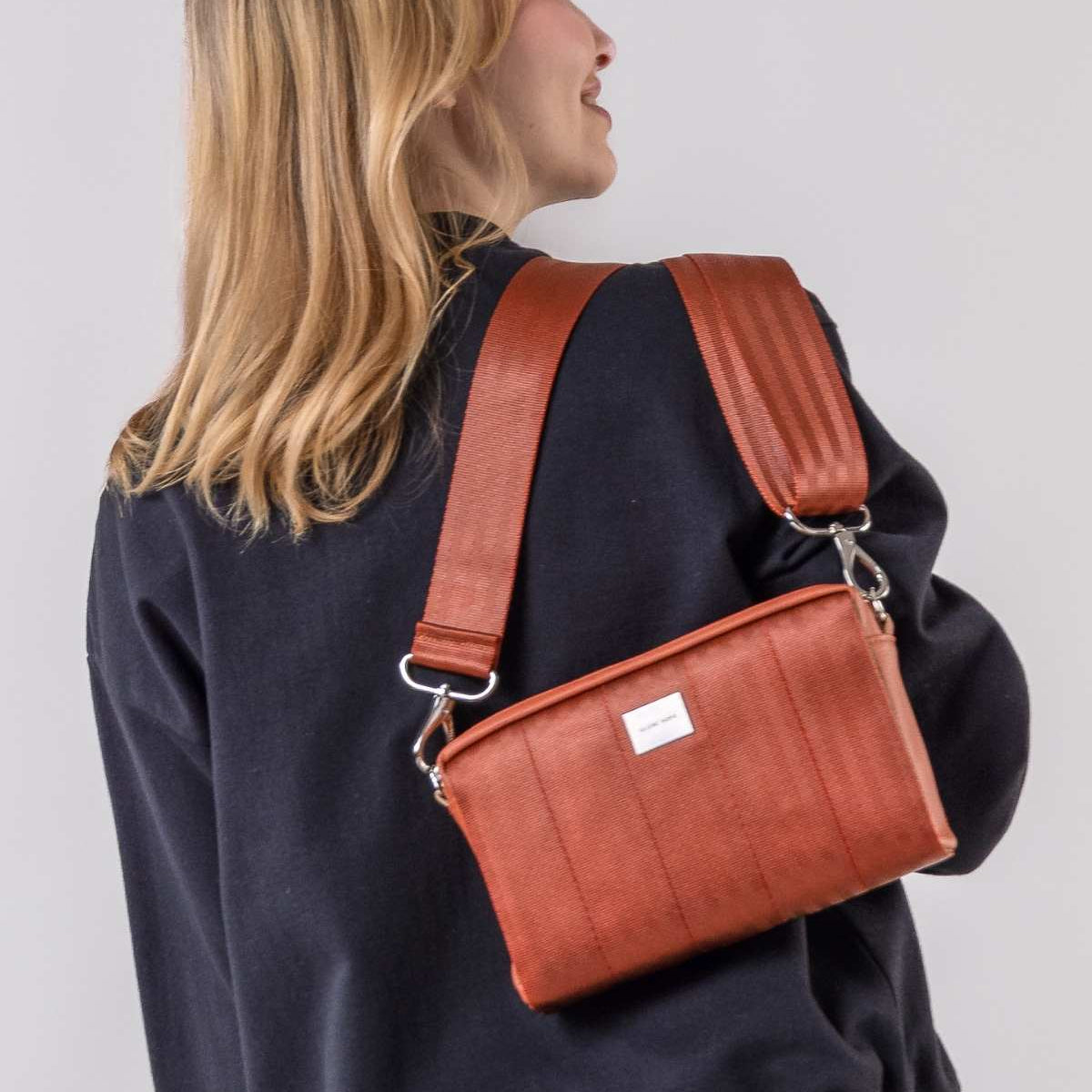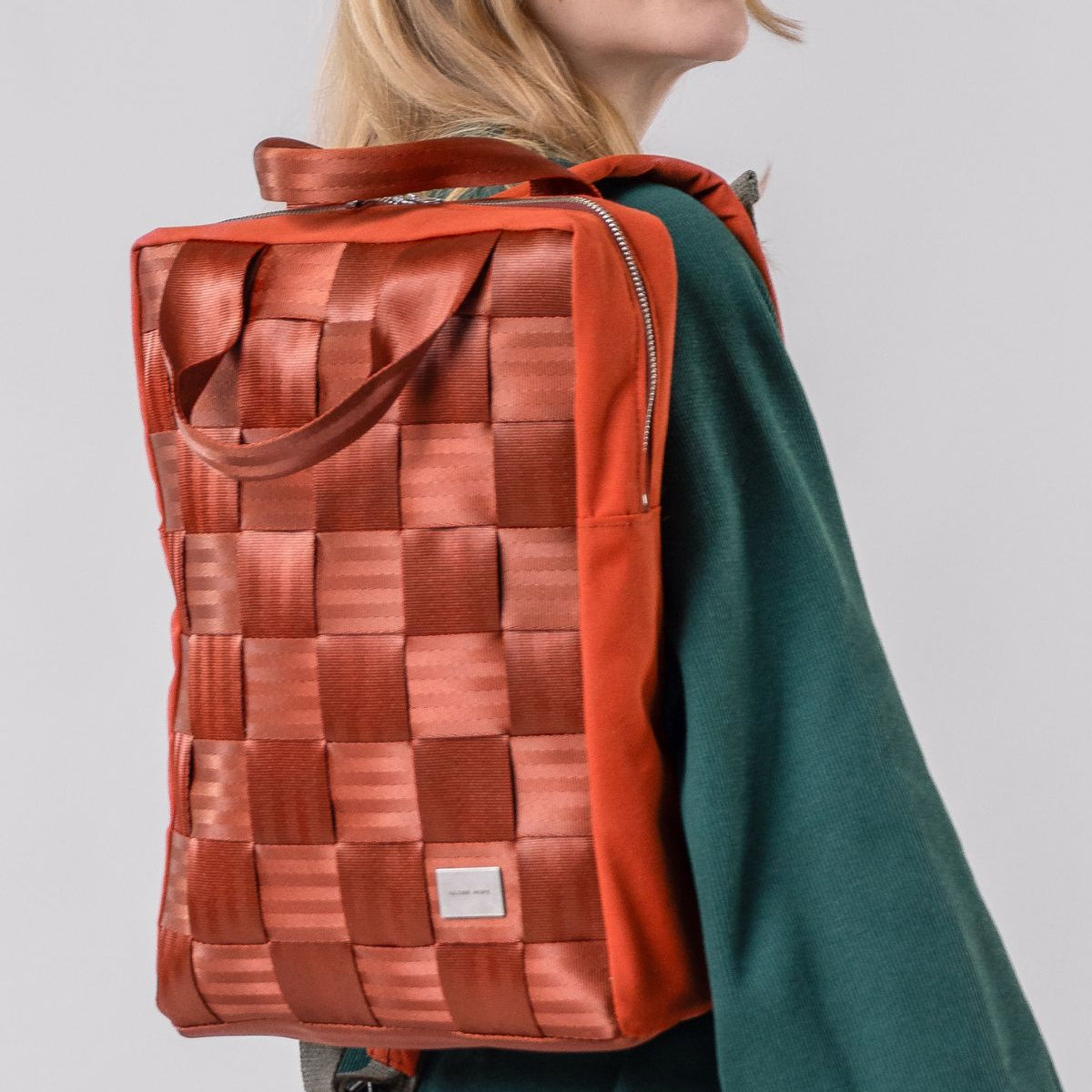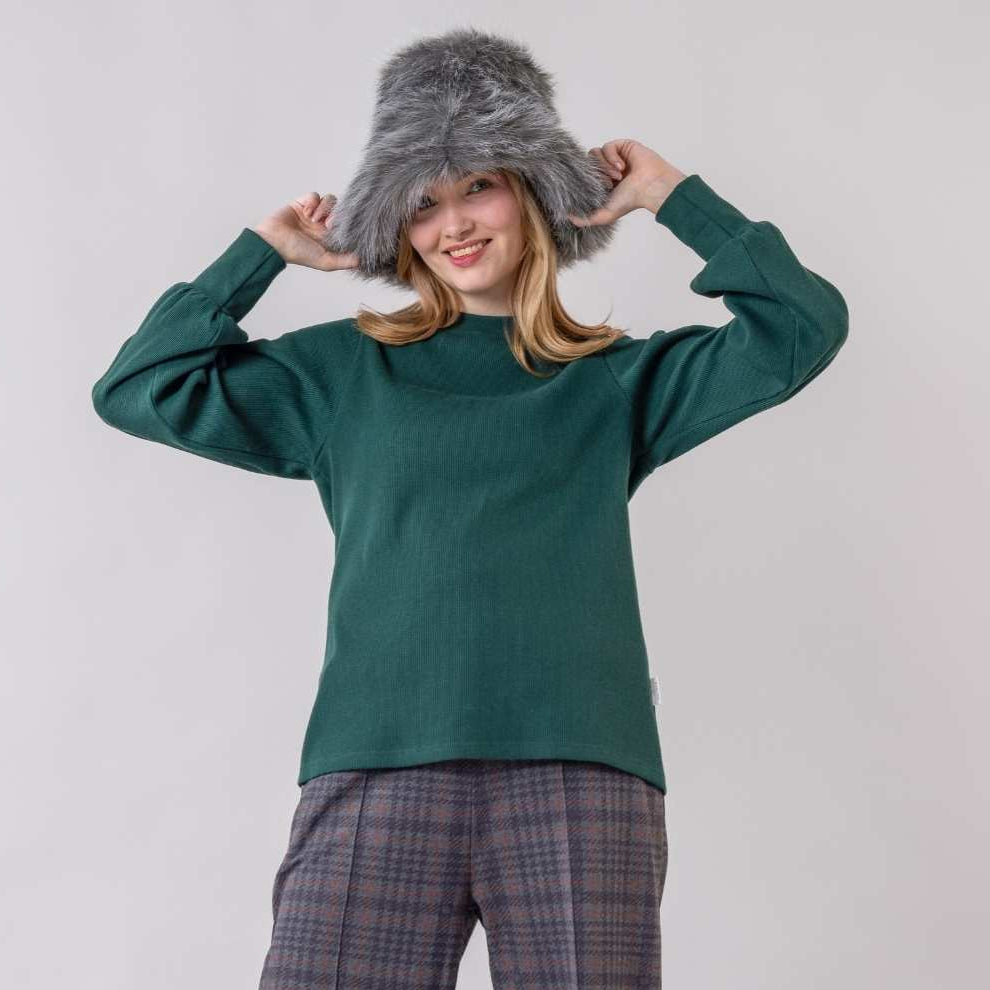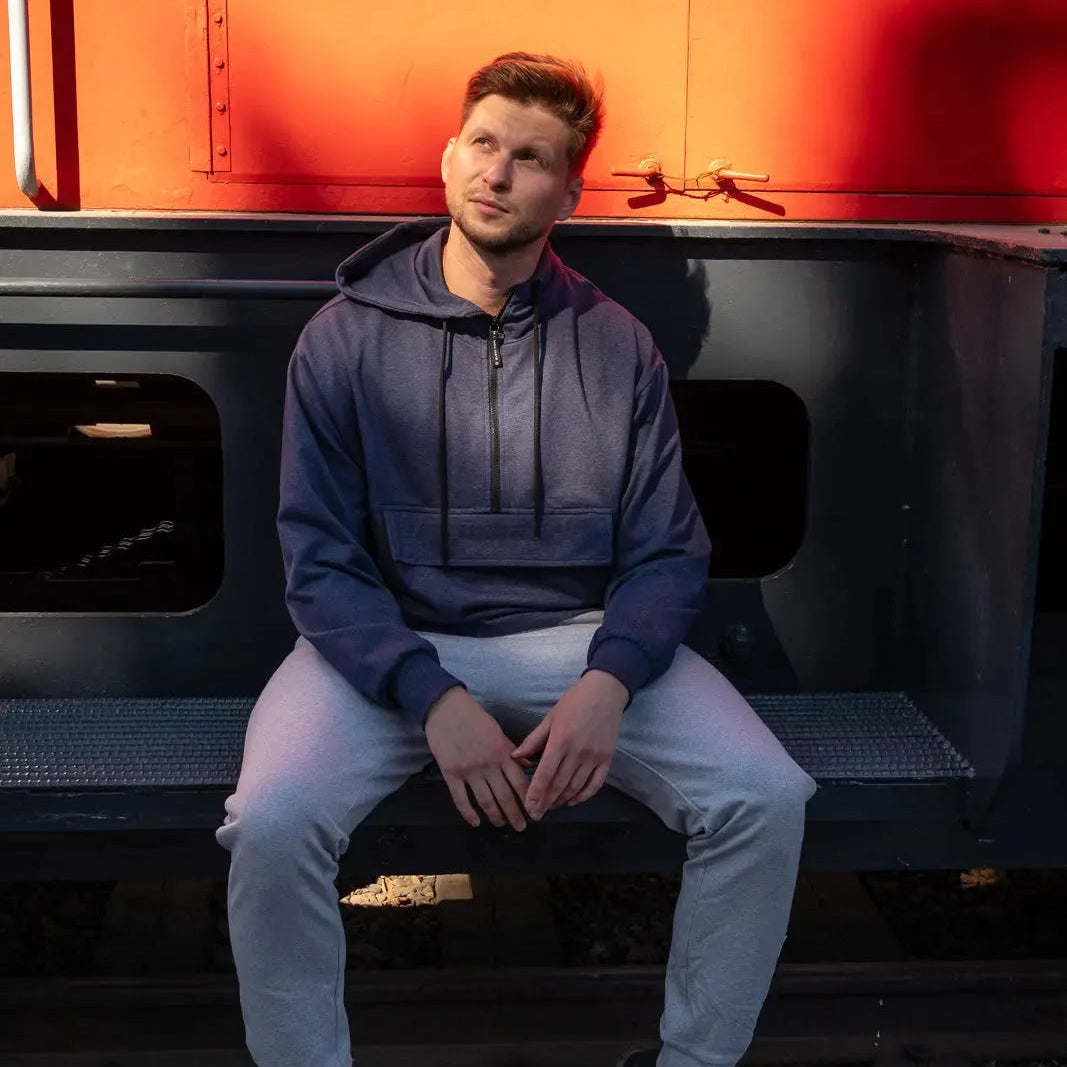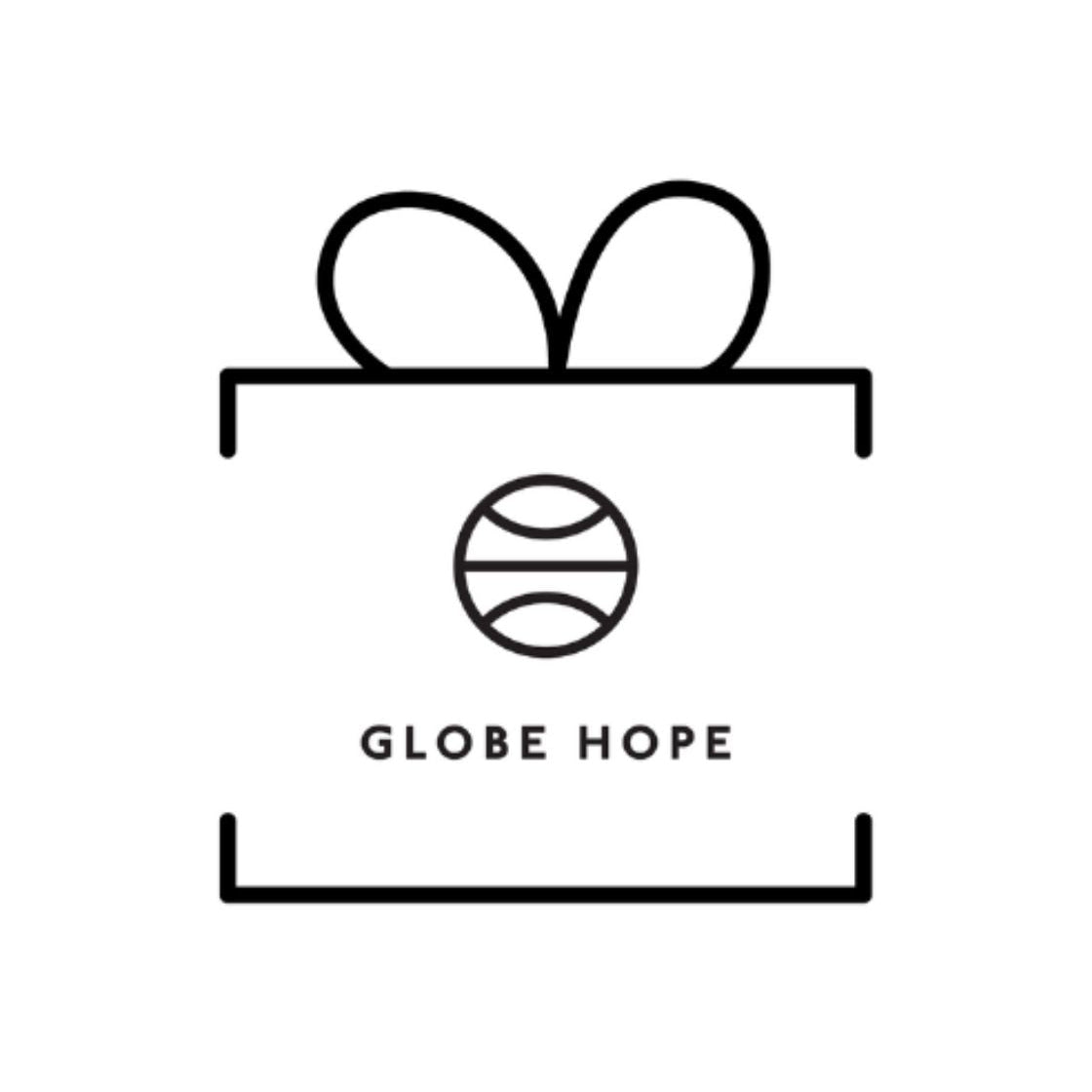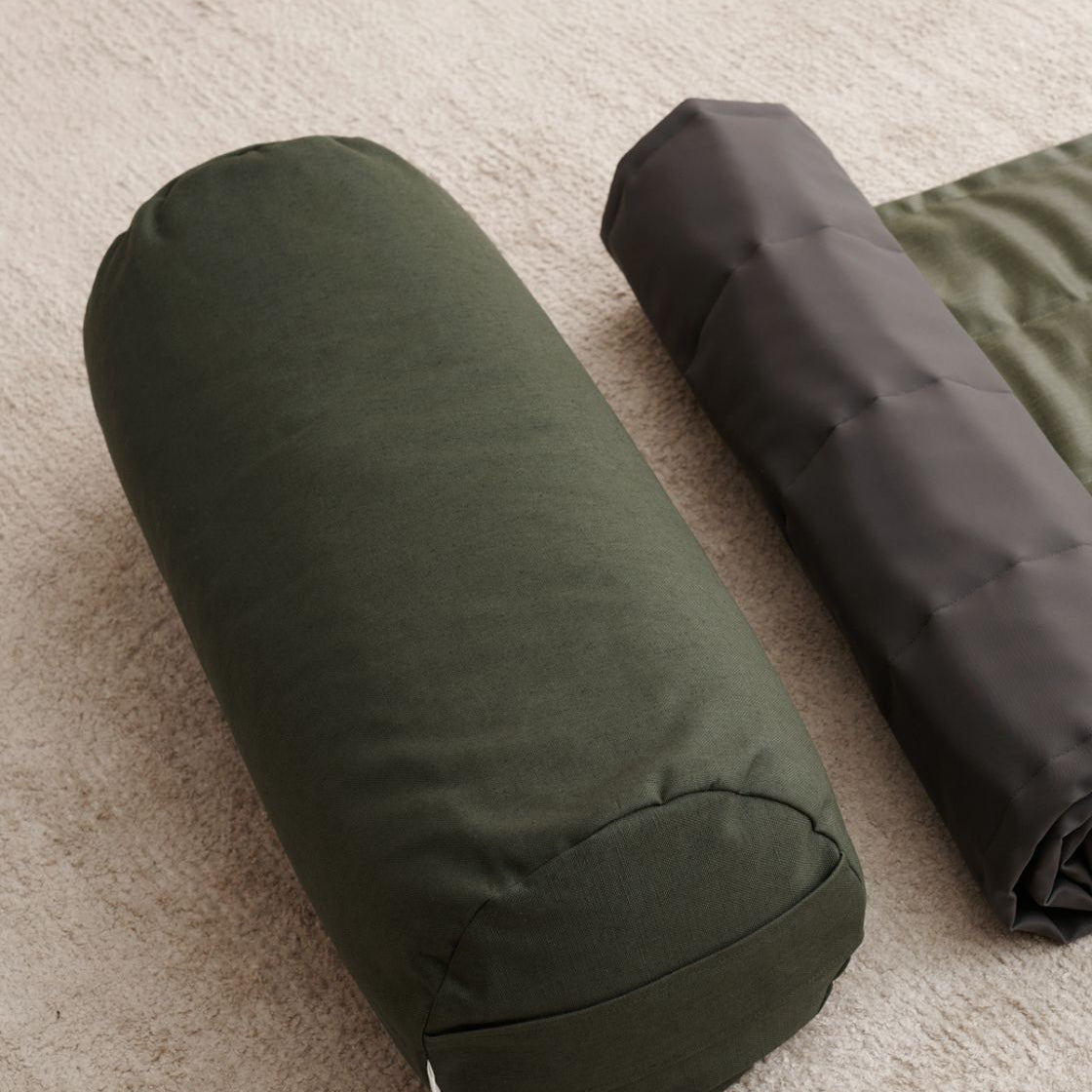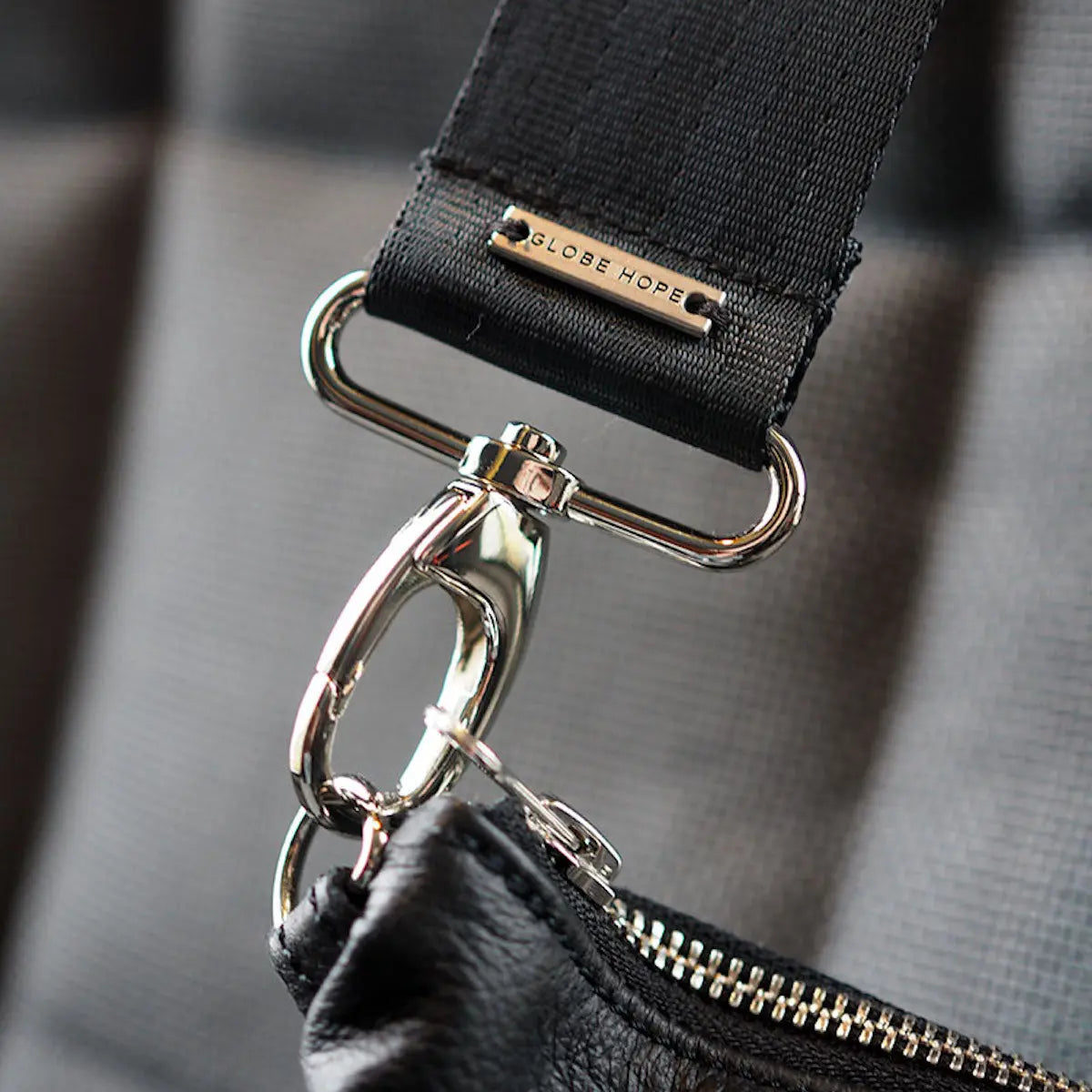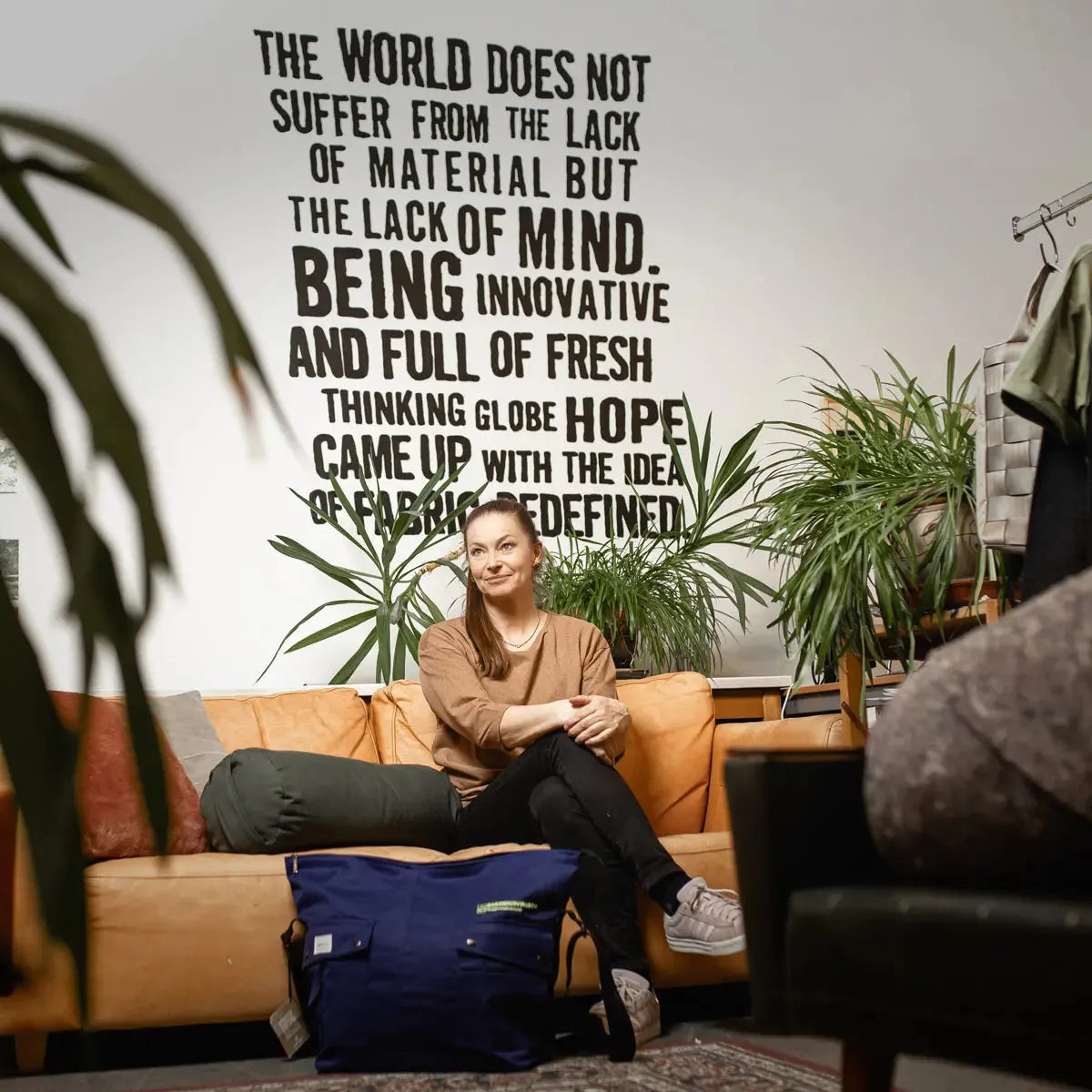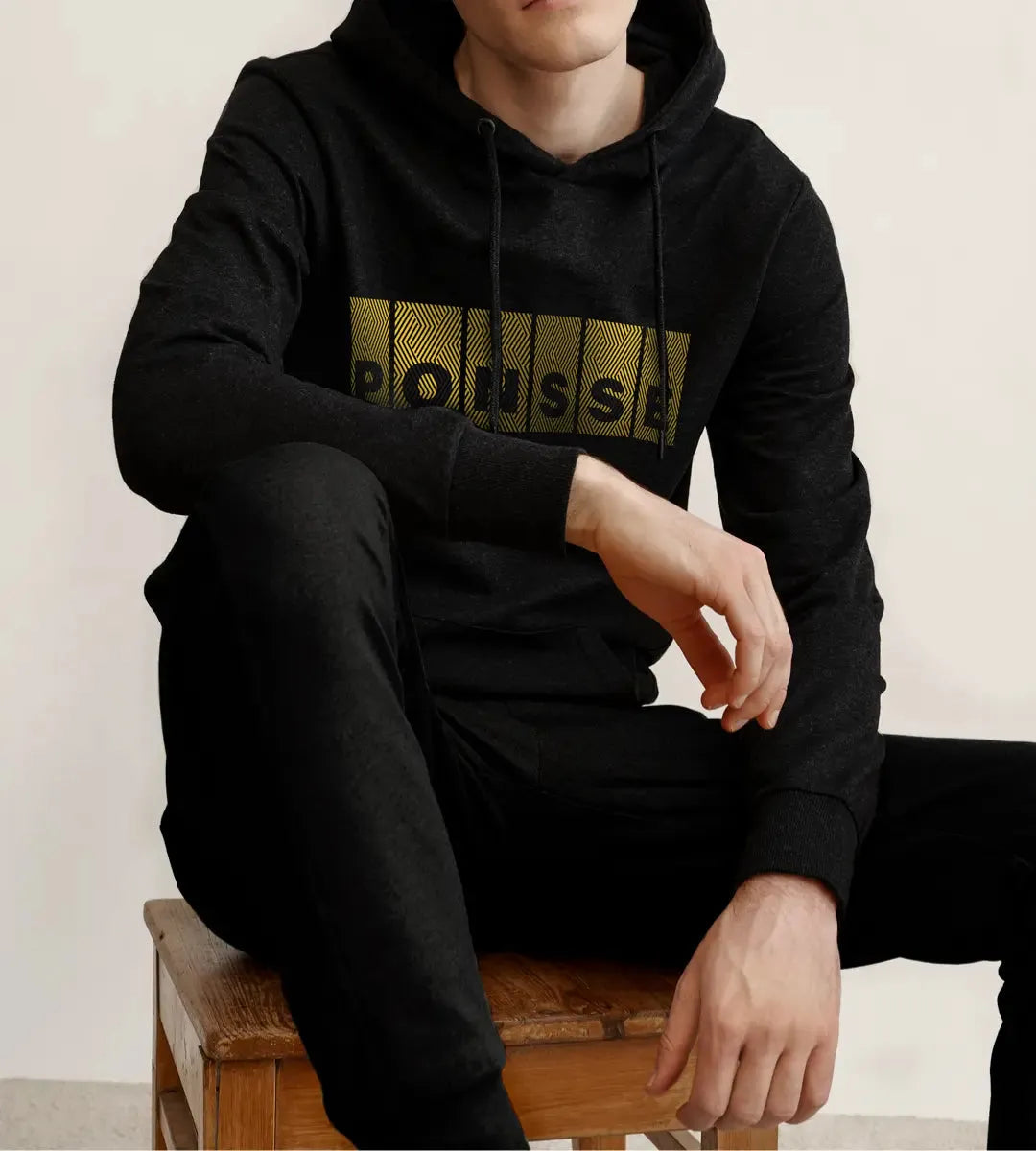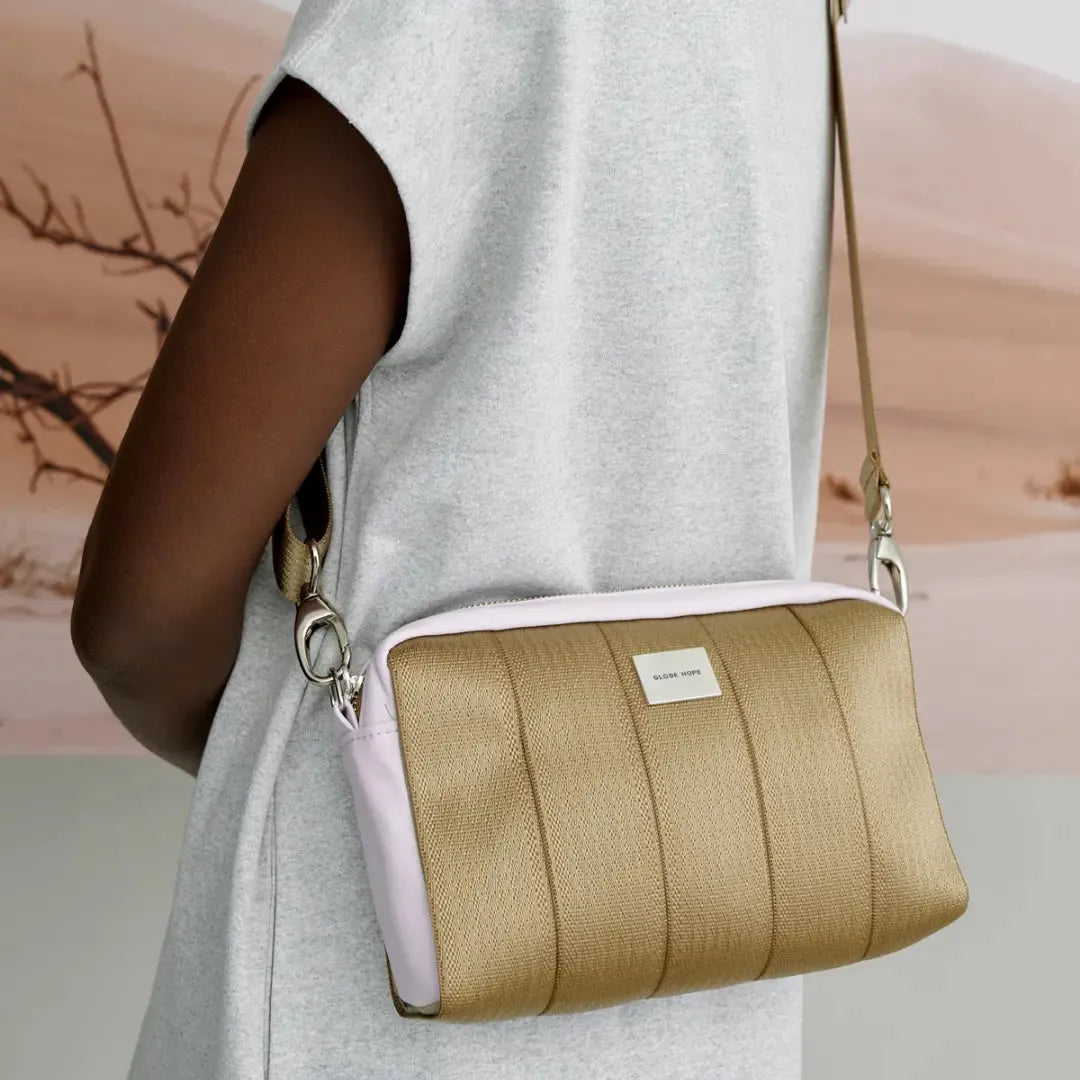16.2.2022
Nothing new since 2003, but what does it mean?
Since its foundation in 2003, Globe Hope's approach has always been to save existing materials from disposal and utilize them resource-efficiently, either as an upcycled product or a sub-component of another product. But what does it mean in practice?
From discarded material to sustainable design product
Our catchy slogan might be a bit exaggerated, but it effectively captures the essence of everything we do. Around 95% of the total amount of materials in our products is recycled. The remaining 5% includes new materials we use, such as zippers, metal parts for bags, reflective fabric, and other parts that for quality reasons we have to buy new for the time being. The slogan describes our business well in that we don't just use recycled materials in only some of our products, but in everything we do.
"The design of each product and collection starts with available recycled materials and the opportunities they offer. Materials also have a significant impact on production volumes. If we run out of materials, we run out of product availability," tells Karoliina Halsti-Ndiaye, Production Controller at Globe Hope.
Where did the idea of using textile waste come from?
Vielä 90-luvun puolella Globe Hopen perustaja Seija Lukkala toimi toisen vaatetusyrityksen johdossa. Yritys valmisti kotimaisia, korkealaatuisia naisten takkeja. Tuolloin laatua ja kotimaisuutta arvostettiin, ja jopa pidettiin itsestäänselvyytenä ostopäätöstä tehdessä. Asiakkaat olivat valmiita maksamaan kotimaisesta naisten takista arvoisensa hinnan, vaatihan sen valmistus työtä ja ammattitaitoa.
At the turn of the millennium, however, fast fashion began to spread to Finland, as it did to the rest of Europe, and Finnish consumers began to question the price of the clothing. The fast-fashion chains' offerings were compared to domestic products only in terms of price, and quality and sustainability were no longer valued in the same way. Consumers bought new clothes cheaply and frequently, which also led to a radical increase in the amount of non-recyclable textile waste.
"The increasing consumption and the amount of textile waste gave me world-weariness and made me wonder what I could do about it. That's when I got the idea to keep textile waste in circulation as an upcycled product. I wanted to make high-quality design products that would not only be an investment for textile waste but would also offer a responsible alternative to products that waste new resources every time they are made," Seija recalls.
This is when Globe Hope was born, and in 2003 the first concept collection of the brand was presented at the Vateva fair in Helsinki. The first launched product was a purse made of the Nokia rubber boot.
Where do materials come from and how do we use them?
Vaikka varastomme Nummelassa on suuri, emme pysty pelastamaan kaikkea maailman tekstiilijätettä – emme edes Suomen. Tällä hetkellä hyödynnämme materiaaleja, joita on saatavilla edes pieneen sarjatuotantoon riittäviä määriä. Materiaalit voivat olla yritysten tekstiilipoistoja, kuten työvaatteita tai mainosbannereita. Kuluttajille valmistamissamme tuotteissa käytämme materiaalien tuotannon virhe-eriä tai ylijäämäpaloja ja varastoylijäämää.
Pelastamme välillä suurempia eriä materiaalia hävitykseltä. Esimerkiksi kaikki "peatwool" beanies ja -asusteet valmistetaan toimintansa lopettaneen Kultaturpeen poistoerästä. Yrityksen toiminnasta jääneitä turvelankoja uhkasi poltto, joten pelastimme suuren erän lankoja varastoomme. Tuosta erästä kudomme suosittuja vegepipoja vielä pitkään.
Yksi Globe Hopen tunnetuimpia materiaaleja on turvavyö. Alkujaan valmistimme seat belt bags ainoastaan autopurkamoista tulevista käytetyistä turvavöistä. Kysynnän kasvaessa olemme solmineet lisäksi suhteen eurooppalaiseen turvavyövalmistaajaan, jolta ostamme välillä erän 2-laatuisia turvavöitä. Nuo turvavyöt eivät valmistusvirheidensä vuoksi koskaan päätyneet alkuperäistarkoitukseensa, mutta käyvät erinomaisesti laukkujen ja asusteiden materiaalina. Tämä mahdollistaa hieman suuremmat tuotantomäärät, mutta myös tuo materiaalilähde on rajallinen ja vaihteleva. Tämän vuoksi myös osa turvavyölaukuistamme ovat eksklusiivisia ja rajoitettuja eriä.
Kaikkea tekstiilijätettä ei voida enää hyödyntää uusiotuotteessa sellaisenaan. Esimerkiksi textile waste saattavat olla kuluneita tai likaisia, eikä niitä ole järkevää hyödyntää enää kankaana. Tällöin materiaali voidaan hyödyntää osakomponenttina toisessa tuotteessa. Kangas voidaan repiä pienempään muotoon silpuksi tai kuiduksi, ja hyödyntää täytteenä, pehmusteena, tai vaikka suodattimena. Yritysten tekstiilijätteestä valmistettua pehmustetta hyödynnetään esimerkiksi yoga collection tuotteiden sisällä.
Are recycled materials always sustainable and do we know their origin?
Globe Hope's core idea is that any material that has already been produced should be upcycled or recycled for as long as possible. No matter what the material is, or where it was originally produced, we want to give it another chance instead of throwing it away.
Vaatteemme valmistetaan 100 % kierrätyslangasta, joka koostuu puuvillaleikkuujätteestä ja kierrätetyistä muovipulloista. Tuo materiaali, kuten koko vaatteiden tuotantoprosessi, on GRS certified ja jäljitettävä. Voimme siis olla varmoja, että sekä leikkuujäte, että muovipullot todella ovat kierrätettyjä.
The materials we use in our bags are mainly from Finnish suppliers. Exceptions are the military leftovers, and the surplus belts, which come from Europe. We can verify the origin and composition of some of the materials, but the country of manufacture of some of the fabrics we can no longer tell at this stage in the cycle. Still, we will give the material a chance to shine in a design product for years to come.
Read more about our recycled materials and production
Read how companies can responsibly recycle their textile waste

